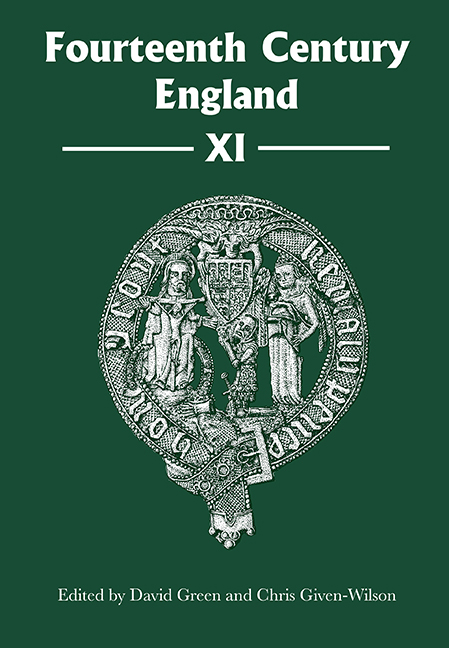Book contents
- Frontmatter
- Contents
- List of Illustrations
- List of Contributors
- Preface
- Abbreviations
- The Evolution of Edward I's ‘Historical’ Claim to Overlordship of Scotland, 1291–1301
- Prelates and Political Reform: The Bishops and the Ordinances of 1311
- Sir Robert de Wateville (d. 1330) of Essex and the Younger Despenser, 1322–6
- Memory, Genealogy and Nationality in Plantagenet England: The Plugenet and Walerand Estates, 1265–1368
- The ‘Apparitional’ Magna Carta in the Long Fourteenth Century
- Family, Loyalty and the Royal Household in Fourteenth-Century England
- The Revolution Stops Here? Leicestershire and the Rebellion of 1381
- FOURTEENTH CENTURY ENGLAND ISSN 1471–3020
Family, Loyalty and the Royal Household in Fourteenth-Century England
Published online by Cambridge University Press: 14 September 2019
- Frontmatter
- Contents
- List of Illustrations
- List of Contributors
- Preface
- Abbreviations
- The Evolution of Edward I's ‘Historical’ Claim to Overlordship of Scotland, 1291–1301
- Prelates and Political Reform: The Bishops and the Ordinances of 1311
- Sir Robert de Wateville (d. 1330) of Essex and the Younger Despenser, 1322–6
- Memory, Genealogy and Nationality in Plantagenet England: The Plugenet and Walerand Estates, 1265–1368
- The ‘Apparitional’ Magna Carta in the Long Fourteenth Century
- Family, Loyalty and the Royal Household in Fourteenth-Century England
- The Revolution Stops Here? Leicestershire and the Rebellion of 1381
- FOURTEENTH CENTURY ENGLAND ISSN 1471–3020
Summary
At Easter 1339, Roger Beauchamp of Bletsoe was made a knight of Edward III's household and received the customary robes and fees for the forthcoming campaigning season. He had spent the previous two years serving Edward in the Low Countries as one of the king's yeoman and so was already well acquainted with the king. The following year, in addition to receiving robes and fees from Edward, Roger was named as one of Queen Philippa's ‘bachelors’. Roger continued to serve as a knight of both Edward and Philippa's respective households until 1353, and in 1350 was even named the queen's steward. One need not look far for the reason behind Roger's inclusion in both the king's and queen's households: Roger was the latest in a long line of Beauchamps to be retained in service by the English monarchy. His uncle, Giles, had first entered Edward II's household in 1314 and went on to serve Edward II and his son, Edward III, until at least 1353. Roger's grandfather, Walter Beauchamp, meanwhile, spent time as a household knight under Edward I between 1283 and 1300. In total, no fewer than fifteen different members of the Beauchamp family were retained as royal knights during the thirteenth and fourteenth centuries (see Appendix).
Roger Beauchamp's household career reveals two important points about the nature of royal service in late medieval England. First, it makes it clear that, for some families, a strong tradition of household service existed which continued from father to son, serving king after king. Second, it was not uncommon for an individual knight to serve in the household of more than one member of the royal family during their career, sometimes, as in Roger's case, doing so simultaneously. In what follows, this familial aspect of royal service will be traced from the reign of Edward I to that of Richard II. What will be put forward is the idea of a ‘family retaining policy’. This policy saw a group of seventy ‘service families’ provide no fewer than 354 knights to English royal households between 1272 and 1377, as well as to the ‘royal affinity’ of Richard II – a later variation of royal retaining that no longer required knights to be formally attached to the royal household – between 1377 and 1399 (Appendix 1). This represented roughly one third of all knights retained by the crown during this period.
- Type
- Chapter
- Information
- Fourteenth Century England XI , pp. 129 - 154Publisher: Boydell & BrewerPrint publication year: 2019



